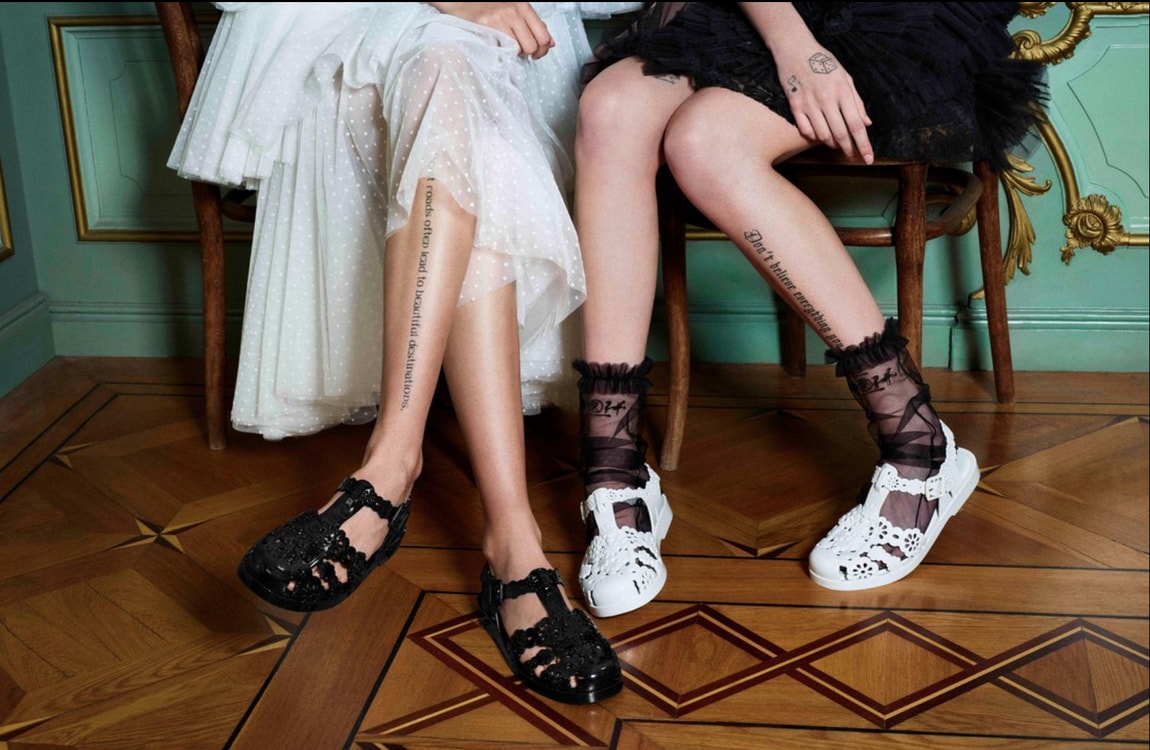
Viktor and Rolf | A Study Of The Brand’s Sustainable Approach
In an interview with Vogue in 2019, luxury fashion brand, Viktor and Rolf, claimed when it comes to sustainability they are “being active about it and actually doing something.” In this study, we will be evaluating what that “something” is and if it’s enough within the fashion industry, or simply enough for us to have confidence in the proclaimed sustainability of this brand.

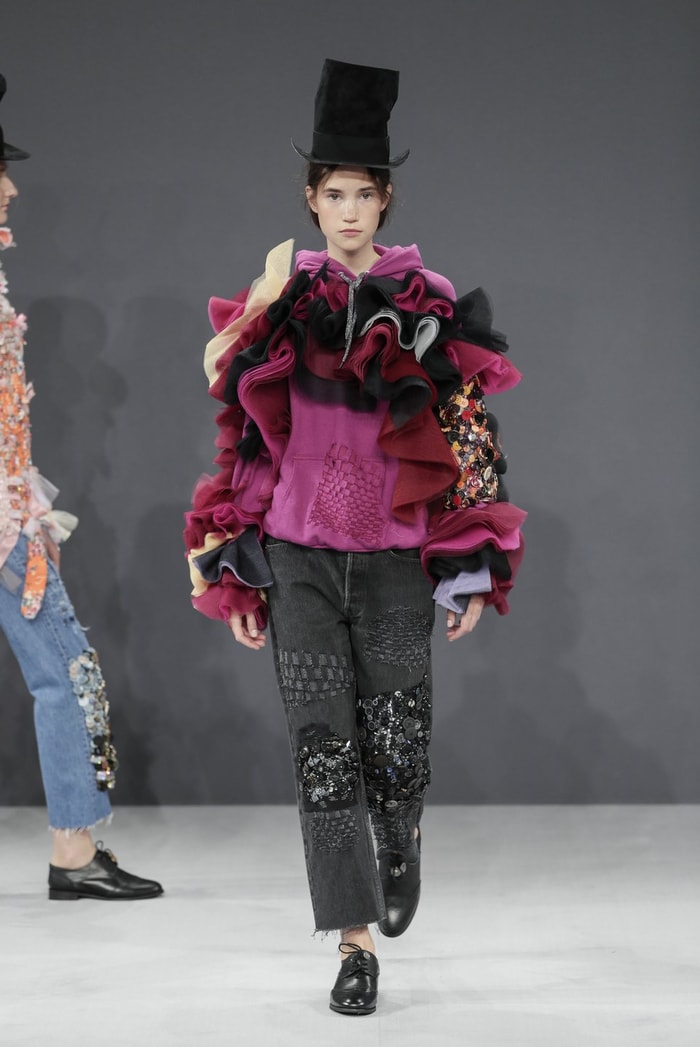
“Provocative couture. Unexpected elegance. Conceptual glamour” – a few phrases that have been used to describe Viktor and Rolf. Founded in 1993 by Dutch designers Viktor Horsting and Rolf Snoeren, their avant-garde, ready-to-wear and couture collections have relied on perforative catwalks; “with no advertising campaigns, no self-standing boutiques, and no mass-produced clothes to sell, their early relationship with the public depended heavily on the generous amounts of press coverage they received each season.” That “generous amount of press” was usually found with bold, outrageous or humorous statements made within their presentations. They are known for bridging the gap between fashion and art. But, with reviews hailing them as “no strangers to the concept of sustainable fashion” we want to look at the aspects of sustainability in Viktor and Rolf.
A SUSTAINABLE APPROACH TO COUTURE
In this study, we will be evaluating the couture collections of Viktor and Rolf – specifically the collections from 2015 onwards. That is because in 2015 Viktor and Rolf announced plans to “terminate its ready-to-wear line, following its autumn/winter 2015 collection” and instead, “focus attentions on its couture and fragrance ranges” – as reported by Vogue. Viktor and Rolf have reorganised their brand to better represent their creative vision. So, to evaluate how sustainable the brand is right now, we must look at the most recent collection that was created within this new format for the brand. Also, cutting out ready-to-wear can already be considered a sustainable move – less consumption and less waste.
In 2016, Turnabout magazine declared that when it comes to sustainability, haute couture has “never been part of the conversation. That is until design duo Viktor & Rolf began creating entire collections out of their atelier scraps.” They have become notorious for their up-cycled couture collections, the first being AW16 ‘Vagabonds’, which used pieces from past collections excessively embellished with discarded fabrics, sequins and beads.
Other notable up-cycled collections include the SS17 patchwork cocktail dresses and the AW18 collection of white dresses, all created with existing fabric. In total five of their twelve collections, since moving away from ready-to-wear in 2015, have been created from up-cycling. A collection most telling to their sustainable commitment is the SS20 collection in which nearly all existing garments had already been used in previous up-cycled collections; Viktor and Rolf resorted to using all the fabric swatches and samples they had.
Viktor and Rolf have experimented with many innovations in their desire to present sustainable couture. For their AW19 collection, they worked with Dutch artist and textile designer Claudy Jongstra, with “her own herd of Drenthe Heath sheep, shearing them, using only natural dyes she developed in her own laboratory made from plants she grew — the designers needle punched, darned and patched and quilted an ode to nature.” Also, for the AW20 collection they “worked with local suppliers around Amsterdam and drew from their own fabric stock.” There was some dispute when it came to the SS18 collecction, which was made entirely out of Duchesse satin. The use of silk in satin makes it an unsustainable fabric however Viktor and Rolf confirmed to Vogue “it wasn’t real silk but a technical approximate from Japan.”
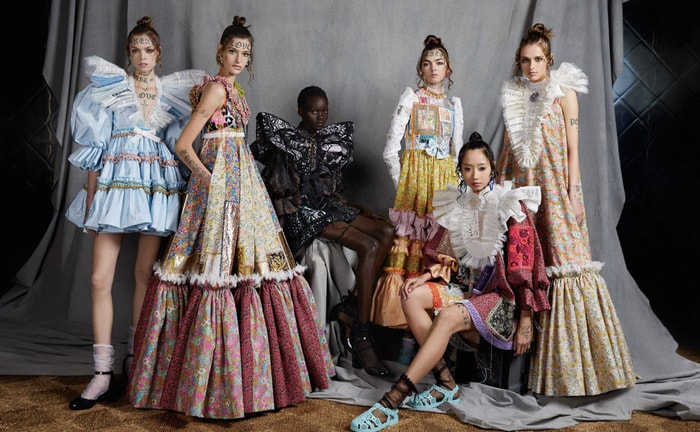
Viktor and Rolf are leading the way for sustainable couture. High fashion has always seemed untouchable, in a league of their own – where the sustainable movement could not break through. But, there is a notion that couture could become the most sustainable of all sectors of fashion; “while Haute Couture appears to be wasteful because of its extravagance and unwearable nature, it’s this same feature that sets it apart from the waste of ready-to-wear. Pieces are created for specific shows or people, rather than being produced in large quantities in hopes of being purchased.” Viktor and Rolf are showing us how to take that one step further and embrace the one-of-a-kind aspects of couture by using sustainability.
However, there is one collection and subsequent garments that we’re questioning. The SS18 collection ‘Fashion Statements’ saw 18 tulle ballgowns, each one exclaimed with statements such as “I’m not shy I just don’t like you” or “I am my own muse.” It could be the brand’s most iconic collection. As WWD reported “the brand’s fanciful collection of tulle ballgowns at Wednesday’s spring 2019 couture show has been flooding Instagram feeds and has even inspired a number of memes.” However, the collection is made with “8 kilometres of tulle” and listed on their website is the detail that Viktor and Rolf’s tulle is 100% Nylon. Unfortunately, Nylon is not a sustainable fabric – it is listed as “harmful for wildlife and ecosystems”, it is not biodegradable and the production of nylon is destructive. The Life Impact has studied the effects of nylon; “micro-fibers wash off and contaminate water systems, nylon is made from petrochemicals that pollute the environment, nylon production is energy intensive and generates high levels of pollution, nylon releases nitrous oxide when manufactured, synthetic materials rely on petrochemical industries, meaning synthetic materials dependent on fossil fuel extraction.”There is an extremely large about of “iconic tulle” on their online stores all made from 100% nylon.
This leaves us questioning whether Viktor and Rolf’s ethos is creativity or sustainability. Because, their SS15, AW15 and SS16 collections are all incredibly artistic – some actually resembling Van Gogh paintings and surrealist sculptures – however, they lack sustainability. Maybe it is something Viktor and Rolf are finding their feet for, as it were, or maybe when their creative freedom is threatened, sustainability comes second?
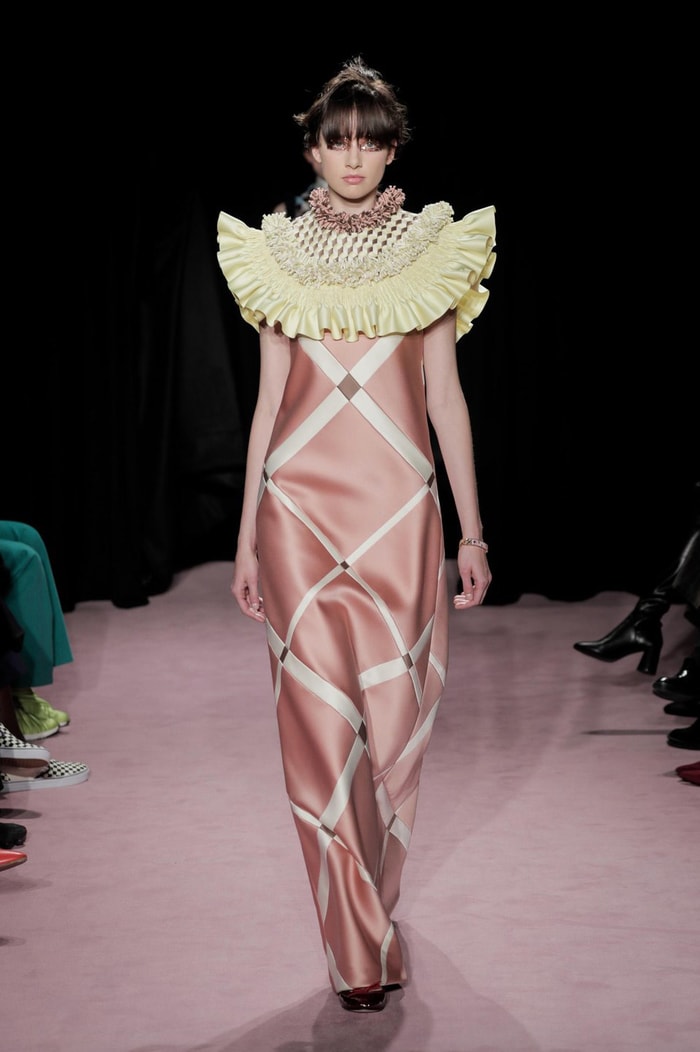

COLLABORATIONS THAT PROMOTE SUSTAINABILITY
Some might argue that couture doesn’t have a big enough effect on the fashion industry and, in turn, a sustainable couture collection won’t influence change in some of the more damaging areas of fashion – the mass market. After all, it is estimated that only 4000 people worldwide actually purchase couture and 70% of consumers follow street style rather than catwalks.However, Viktor and Rolf have been involved in many collaborations which show their true commitment to championing sustainability, all of them in the same five years we previously looked at for couture collections – from 2015 onwards.
In 2018 Viktor and Rolf stepped into the fast fashion market, in fact they took steps to introduce sustainability into fast fashion through a collaboration with the Berlin-based company, Zalando. The collaboration, Re: Cycle, was a 17 piece limited edition capsule collection created of returned items that could no longer be sold. It was demonstrating how the wasteful effects of fast fashion can be reversed. Viktor and Rolf said of this collaboration, “with Zalando, we are excited to bring forth this spirit of sustainable fashion in a bold and accessible way by breathing new life into forgotten garments.” A Luxury couture brand working within the accessible, fast fashion market shows their passion for sustainability is more important than their brand image.
In 2020 Viktor and Rolf partnered with the Swiss premium underwear label Calida for “A Truly Green Story – A 100% compostable collection for a better world.” Janine Weiz-Bühler, director of brand and products at Calida said in a statement “by working with Viktor & Rolf we are proving that high fashion and the highest standards of sustainability are not mutually exclusive.” Also in 2020 Viktor and Rolf worked with the Brazilian brand Melissa to created a limited edition collection of vegan wick bucket bags and jelly shoes. The collection was launched with the SS20 couture collection in Paris, it’s “made with Melfex material, which is 100% vegan” but also these items can be “easily disassembled and recycled” making for an even more sustainable journey.
All of these collaborations show Viktor and Rolf are committed to using their creativity, financial position and exposure to highlight sustainability in all aspects of the fashion industry. Whilst also working with brands that have expressed an interested in improving, or solely focusing on, sustainability.
However, as with the couture, there is an odd-one-out. In 2019 Viktor and Rolf collaborated with the French lingerie company – the experts in seduction – Aubade for a capsule collection of lingerie. However, the focus was on the aesthetic, with “lace features an appliqued bow motif and delicate garlands of dots on a mesh background, while flat satin bows add an unexpected touch to both the front and the back of the pieces.” This might be an oversight but this collection has no mention of sustainable qualities, in fact, sustainability does not feature in any advertisement, description nor reviews. Which unfortunately leads us to believe, it simply, isn’t sustainable.
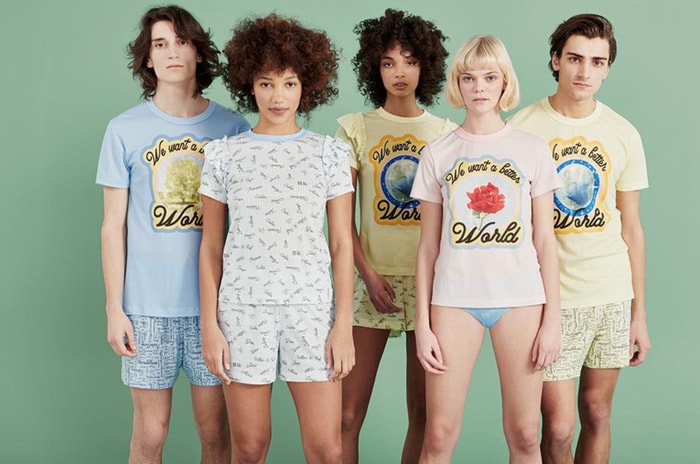
SUSTAINABILITY IN THE BEAUTY INDUSTRY
In 2015 The Independent announced that for Viktor and Rolf “it’s the perfume that brings in the real profit”. A fragrance, for any luxury brand, offers “a price point for an aspirational customer to buy into the brand.” For Viktor and Rolf their perfume ‘Flowerbomb’ sums up their entire creative vision. In an interview with Love Magazine, when asked to “choose a piece, a collection, a moment, to sum up Viktor & Rolf. Viktor offers Flowerbomb, the perfume, with a distinct certainty.”
This fragrance, which was first released in 2004, and their two other fragrances, Spicebomb and Bonbon, have all been part of a collaboration with L’Oreal. In 2017, L’Oreal was named the “top performing global company on sustainability” and in 2020 they unveiled a plan to go 100% sustainable by 2030. Yet again, Viktor and Rolf prove they are only interested in working with those who understand sustainability.
However, Viktor and Rolf’s actual perfumes fall flat. Yes, they are listed to have a refill option, which cuts down on the waste of plastic pumps used in perfume bottles. But, it’s also on PETA as a perfume brand that is not cruelty-free. When harming animals this practise cannot be considered sustainable. A brand named Eden Perfumes, have even taken to duplicating many luxury perfumes that do not meet vegan or sustainable requirements. They have developed a perfume that is a “natural alternative cruelty-free vegan equivalent to Flowerbomb by Viktor & Rolf.” The reviews stat that “it is spot on, I honestly can not tell the difference.” So, if the perfume can be vegan, why have Viktor and Rolf not chosen that option? It comes back to the idea of creative freedom being more important than sustainability.

CONCLUSION
There is no doubt Viktor and Rolf are a sustainable brand. They are changing the image of couture by presenting sustainability as a new creative challenge. Also, they have shown, through collaborations, they are not just a brand but a force within the industry, to promote sustainability.
However, we have seen some inconsistencies. That is the main problem with Viktor and Rolf; some collections and collaborations have an inspiring commitment to sustainability but then, another project will contradict that. One example are the shoes and bags created with Brazilian brand Melissa which are vegan however the Viktor and Rolf perfume line is not vegan. For customers we would advice researching each collection, garment or item before investing. But, for customers researching the brand there is a lack of transparency. We were unable to find information on Viktor and Rolf’s energy use – do they use renewable energy? Supply chains and where their material and manufacturing is sourced, or their carbon emissions. The brand is producing sustainable collections but we can’t verify if sustainability goes deeper into the conduct and operating of the brand.
But finally, we have to agree with Viktor and Rolf’s statement, when it comes to sustainability they are “being active about it and actually doing something.”They might not have a report on their current sustainability, or sustainable goals, like many other luxury brands. But we are seeing far more real, sustainable output from Viktor and Rolf than any other luxury brand.








